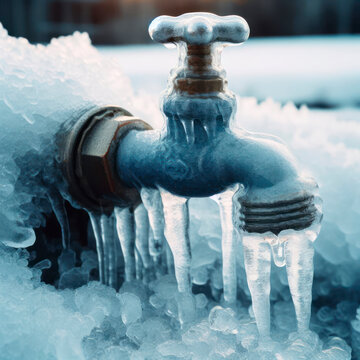Protecting Pipes from Cold Weather: Best Methods
Schedule Now!Are you interested in advice about How to prepare your home plumbing for winter weather?

Cold weather can damage your pipes, specifically by freezing pipes. Below's just how to stop it from taking place and what to do if it does.
Introduction
As temperature levels decline, the danger of frozen pipelines rises, potentially leading to costly fixings and water damages. Understanding how to stop frozen pipelines is important for house owners in cold environments.
Prevention Tips
Insulating prone pipelines
Cover pipelines in insulation sleeves or utilize heat tape to protect them from freezing temperatures. Concentrate on pipelines in unheated or outside areas of the home.
Heating methods
Keep interior rooms sufficiently heated up, especially areas with pipes. Open cupboard doors to allow warm air to distribute around pipes under sinks.
Just how to identify icy pipes
Look for lowered water circulation from faucets, unusual odors or noises from pipes, and visible frost on subjected pipes.
Long-Term Solutions
Architectural adjustments
Consider rerouting pipes far from exterior walls or unheated locations. Add extra insulation to attics, cellars, and crawl spaces.
Updating insulation
Invest in premium insulation for pipes, attic rooms, and walls. Proper insulation aids keep constant temperature levels and reduces the risk of icy pipes.
Safeguarding Outside Plumbing
Garden hose pipes and outside faucets
Separate and drain yard pipes prior to wintertime. Install frost-proof spigots or cover outside taps with insulated caps.
Recognizing Icy Pipes
What triggers pipelines to freeze?
Pipes ice up when subjected to temperatures below 32 ° F (0 ° C) for extended periods. As water inside the pipelines freezes, it increases, taxing the pipeline wall surfaces and possibly creating them to burst.
Dangers and problems
Frozen pipelines can lead to water system disruptions, residential property damage, and costly repair services. Burst pipelines can flood homes and create extensive structural damages.
Indicators of Frozen Piping
Identifying icy pipelines early can prevent them from rupturing.
What to Do If Your Pipelines Freeze
Immediate activities to take
If you believe frozen pipelines, keep taps available to soothe pressure as the ice melts. Use a hairdryer or towels soaked in warm water to thaw pipelines gradually.
Conclusion
Preventing icy pipes requires positive steps and fast feedbacks. By understanding the reasons, signs, and safety nets, property owners can secure their plumbing throughout cold weather.
5 Ways to Prevent Frozen Pipes
Drain Outdoor Faucets and Disconnect Hoses
First, close the shut-off valve that controls the flow of water in the pipe to your outdoor faucet. Then, head outside to disconnect and drain your hose and open the outdoor faucet to allow the water to completely drain out of the line. Turn off the faucet when done. Finally, head back to the shut-off valve and drain the remaining water inside the pipe into a bucket or container. Additionally, if you have a home irrigation system, you should consider hiring an expert to clear the system of water each year.
Insulate Pipes
One of the best and most cost-effective methods for preventing frozen water pipes is to wrap your pipes with insulation. This is especially important for areas in your home that aren’t exposed to heat, such as an attic. We suggest using foam sleeves, which can typically be found at your local hardware store.
Keep Heat Running at 65
Your pipes are located inside your walls, and the temperature there is much colder than the rest of the house. To prevent your pipes from freezing, The Insurance Information Institute suggests that you keep your home heated to at least 65 degrees, even when traveling. You may want to invest in smart devices that can keep an eye on the temperature in your home while you’re away.
Leave Water Dripping
Moving water — even a small trickle — can prevent ice from forming inside your pipes. When freezing temps are imminent, start a drip of water from all faucets that serve exposed pipes. Leaving a few faucets running will also help relieve pressure inside the pipes and help prevent a rupture if the water inside freezes.
Open Cupboard Doors
Warm your kitchen and bathroom pipes by opening cupboards and vanities. You should also leave your interior doors ajar to help warm air circulate evenly throughout your home.

I was shown that write-up on How To Avoid Freezing Pipes from a pal on our other blog. Liked our article? Please quickly share it. Let other people locate it. Many thanks for going through it.
Get An Estimate